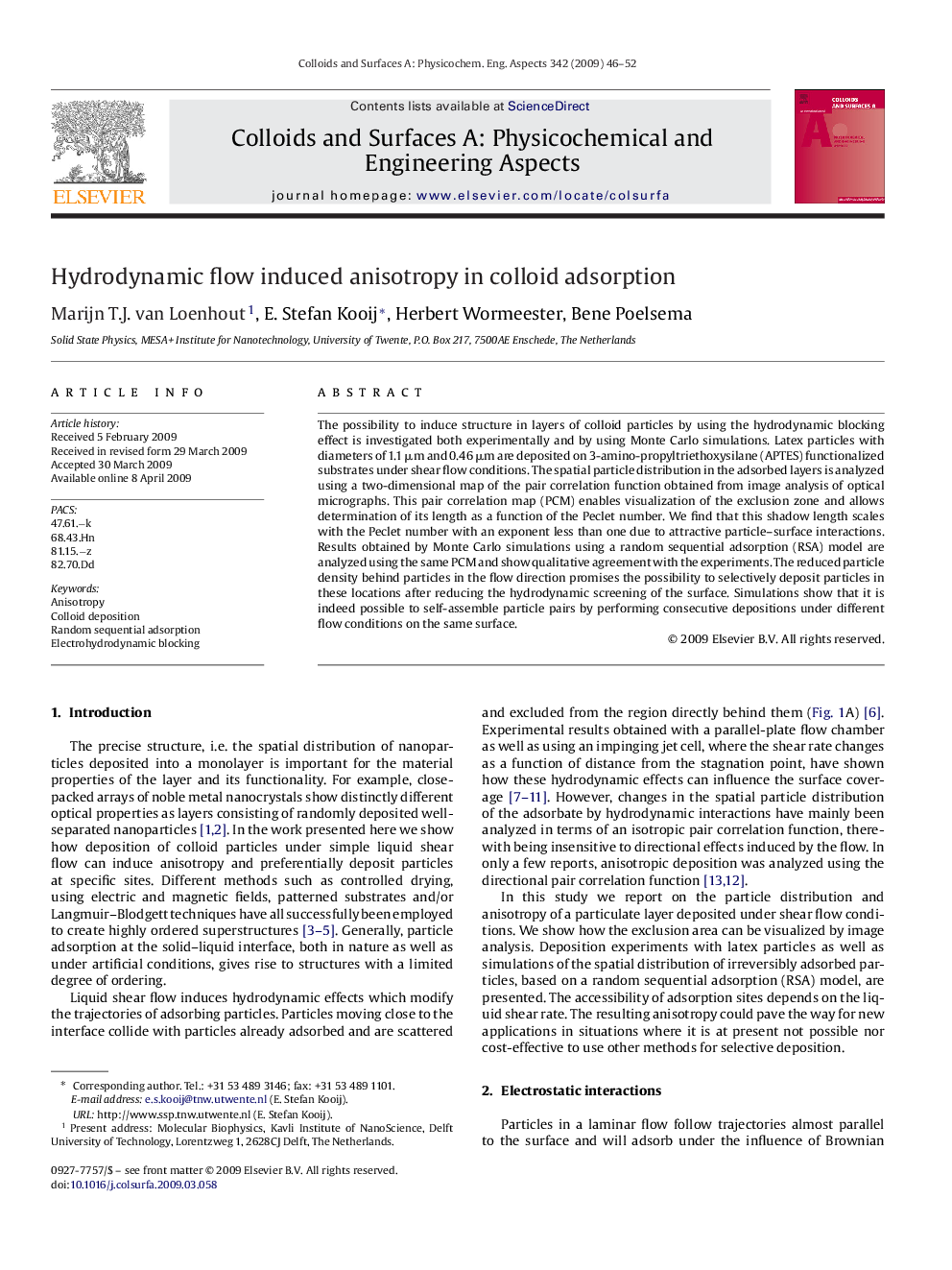| Article ID | Journal | Published Year | Pages | File Type |
|---|---|---|---|---|
| 595954 | Colloids and Surfaces A: Physicochemical and Engineering Aspects | 2009 | 7 Pages |
Abstract
The possibility to induce structure in layers of colloid particles by using the hydrodynamic blocking effect is investigated both experimentally and by using Monte Carlo simulations. Latex particles with diameters of 1.1 μm and 0.46 μm are deposited on 3-amino-propyltriethoxysilane (APTES) functionalized substrates under shear flow conditions. The spatial particle distribution in the adsorbed layers is analyzed using a two-dimensional map of the pair correlation function obtained from image analysis of optical micrographs. This pair correlation map (PCM) enables visualization of the exclusion zone and allows determination of its length as a function of the Peclet number. We find that this shadow length scales with the Peclet number with an exponent less than one due to attractive particle-surface interactions. Results obtained by Monte Carlo simulations using a random sequential adsorption (RSA) model are analyzed using the same PCM and show qualitative agreement with the experiments. The reduced particle density behind particles in the flow direction promises the possibility to selectively deposit particles in these locations after reducing the hydrodynamic screening of the surface. Simulations show that it is indeed possible to self-assemble particle pairs by performing consecutive depositions under different flow conditions on the same surface.
Related Topics
Physical Sciences and Engineering
Chemical Engineering
Colloid and Surface Chemistry
Authors
Marijn T.J. van Loenhout, E. Stefan Kooij, Herbert Wormeester, Bene Poelsema,
